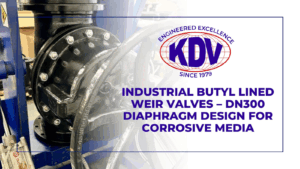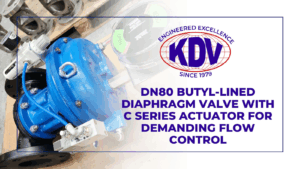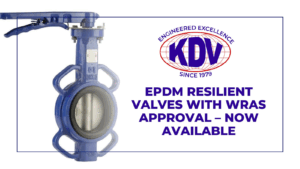Engineered for Harsh Chemistry: The DN40 PFA-Lined Diaphragm Valve
Technical Performance & Compliance at a Glance
The DN40 valve complies with EN558-1 Series 1 dimensional standards, ensuring compatibility with European systems. Its PFA (perfluoroalkoxy) lining offers superior chemical resistance compared to PTFE or rubber alternatives. Operating pressures range up to PN10, and the valve maintains integrity from -20°C to +180°C, depending on the process fluid. The body material is typically ductile iron or stainless steel. Our valves meet or exceed DIN, ISO, and ASTM quality benchmarks and are FDA, RoHS, and ATEX compliant for global deployment in regulated environments.
For a broader overview of our plastic-lined valve range, see how our portfolio meets diverse chemical handling needs.
For background on the types of valves used across industries, refer to this comprehensive guide on valve types.
Industry Applications & Integration Potential
This PFA-lined diaphragm valve excels in chemical plants, semiconductor manufacturing, water purification, and battery production lines, where corrosion poses significant risks. It integrates seamlessly into automated dosing systems, drainage lines, and acid recovery loops. Its compact, modular design makes it ideal for retrofitting or space-constrained installations. In each case, operators benefit from improved leak prevention, process purity, and long-term reliability, especially in applications involving hydrofluoric acid, chlorine dioxide, or caustic alkalis.
For environments with high spill risk, consider pairing with our acid-detecting paint solutions for added visual safety indicators.
Smart Design Meets Resilient Materials
The valve’s PFA lining is chemically bonded to the interior to prevent delamination and micro-leaks—critical when handling ultrapure or highly reactive chemicals. The diaphragm design allows full port flow with minimal pressure drop and eliminates dead zones, supporting CIP/SIP protocols in cleanroom environments. Optional electropneumatic actuators enable integration with PLCs or SCADA systems, enhancing remote monitoring and control. Each unit undergoes rigorous leak, torque, and cycle testing, ensuring a long service life even under continuous operation in aggressive media.
Explore our full selection of actuation systems for precision control options.
To understand more about how fluoropolymers like PFA enhance corrosion resistance, this materials science article offers additional insights.
Installation & Maintenance Guide
Install the valve in a horizontal orientation for optimal diaphragm sealing. Use flange gaskets compatible with PFA-lined equipment. Routine visual inspections and annual diaphragm replacements are typically sufficient. For automated setups, actuator calibration may be required during commissioning.
FAQs – DN40 PFA-Lined Diaphragm Valve
Q1: What makes this valve ideal for corrosive applications?
Its PFA lining resists nearly all inorganic and organic chemicals, including acids and halogens.
Q2: Can it be automated for use with smart systems or PLCs?
Yes, it supports pneumatic or electric actuators with position feedback and smart controls.
Q3: How does this model compare to previous generation valves?
Improved liner bonding, upgraded sealing technology, and longer cycle life distinguish this version.
Q4: Are replacement parts and linings available globally?
Yes, we maintain global inventory networks for diaphragms, actuators, and seals.
Q5: What customization options are available for this valve type?
Available customizations include actuator type, body material, flange drilling, and liner thickness.
Why This Valve Stands Out
The KDV DN40 diaphragm valve with PFA lining offers industry-leading resistance to corrosive agents, precision control, and high operational uptime. It’s a future-ready choice for demanding fluid handling environments.


